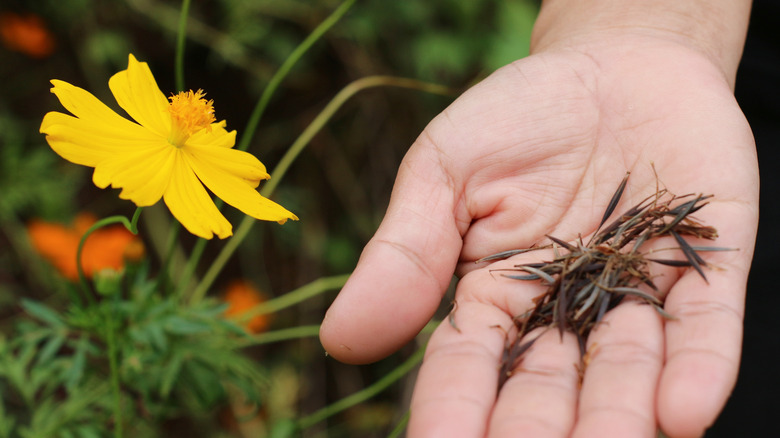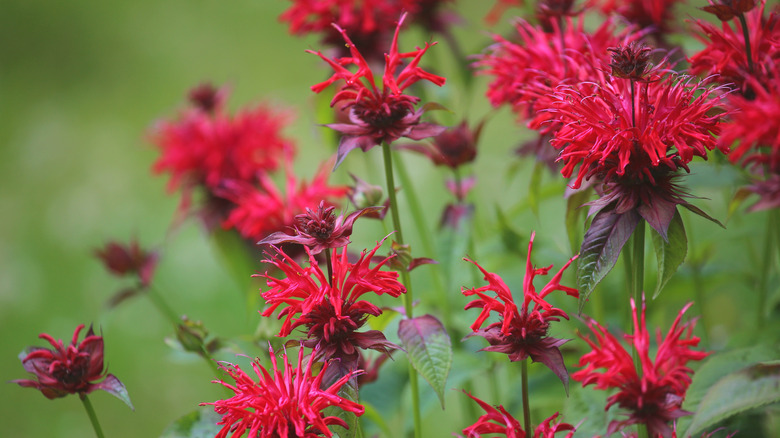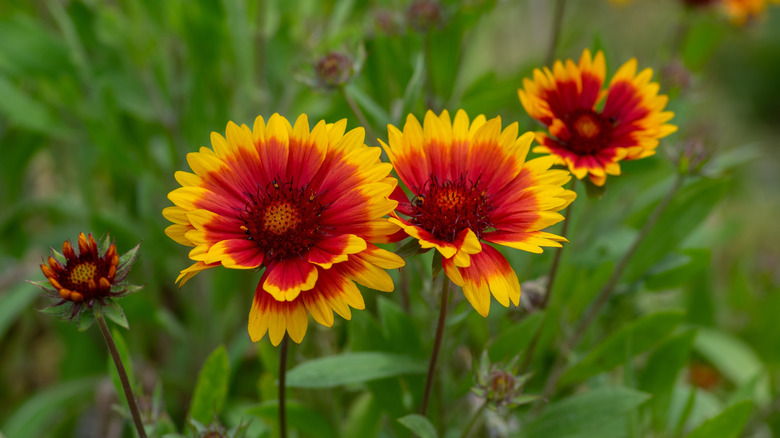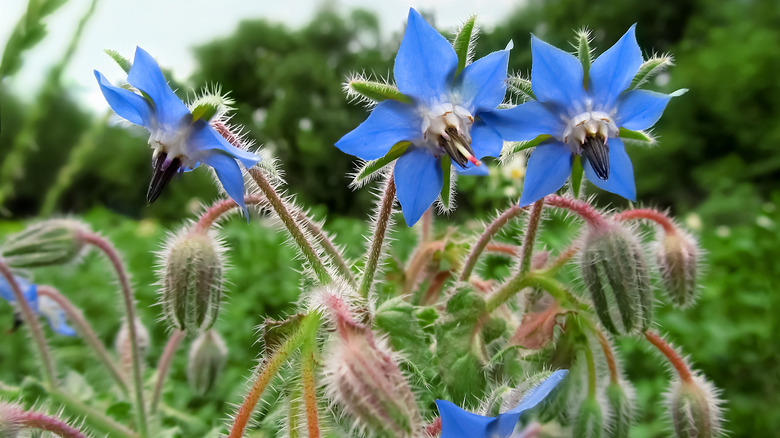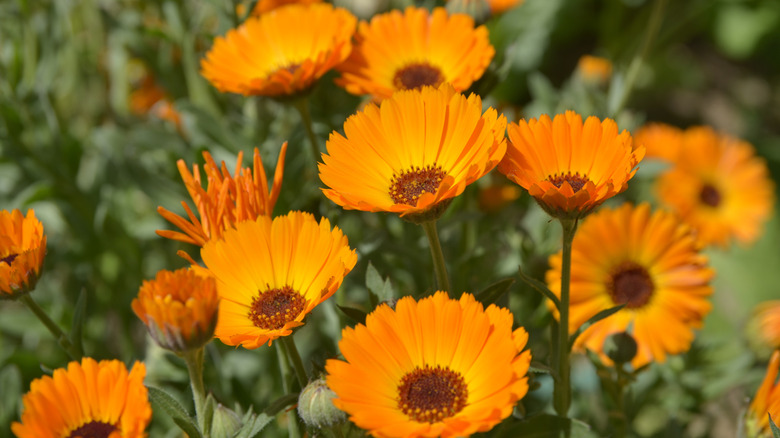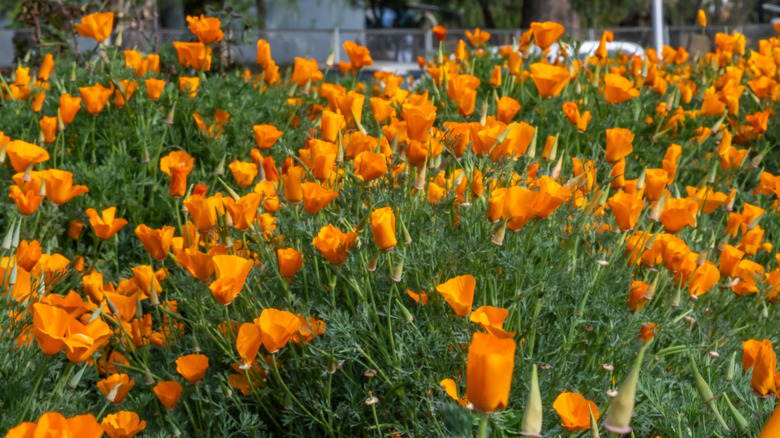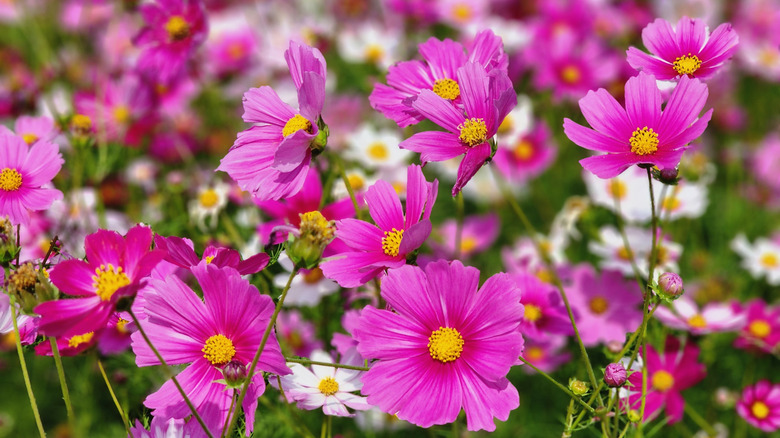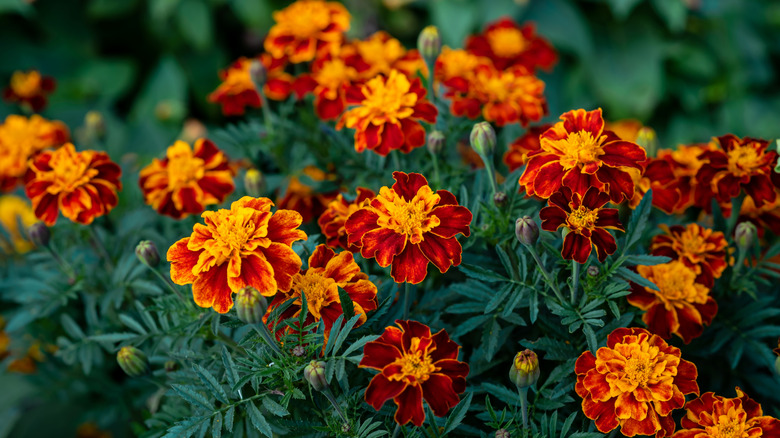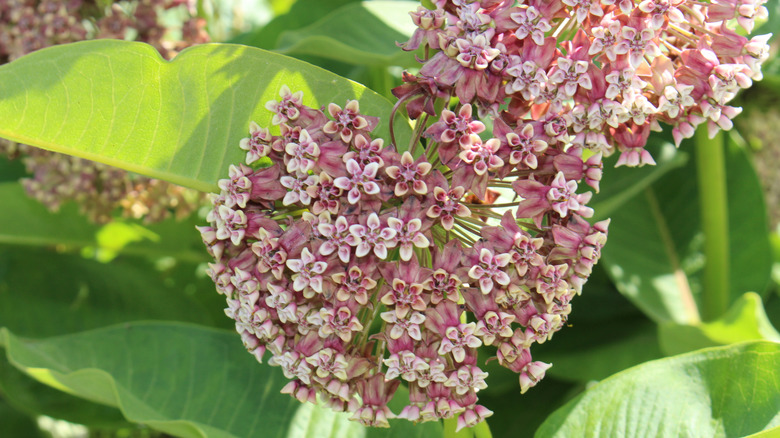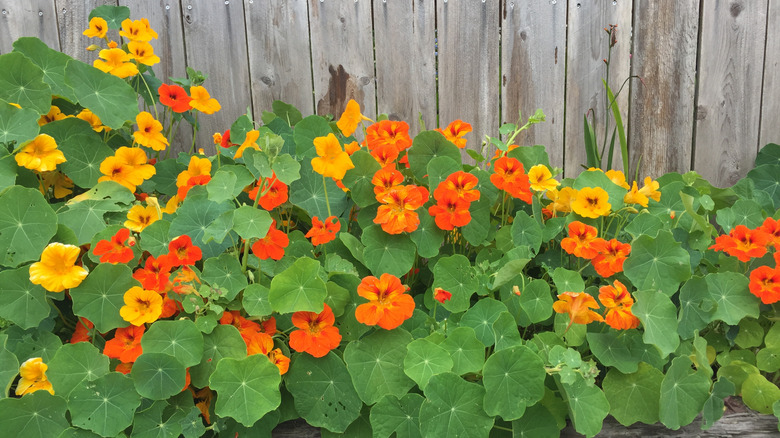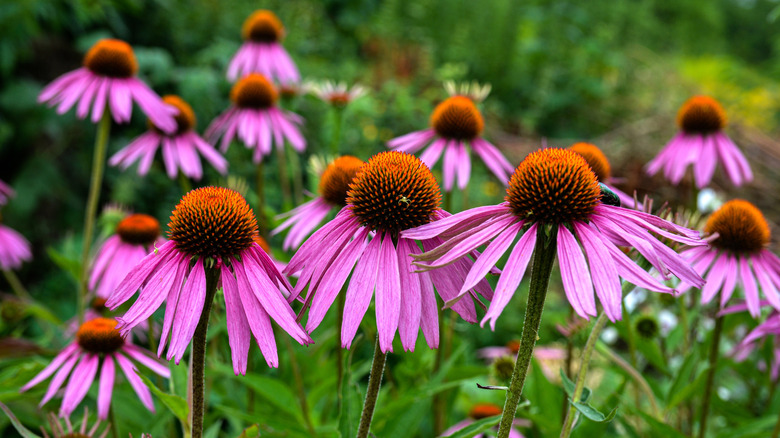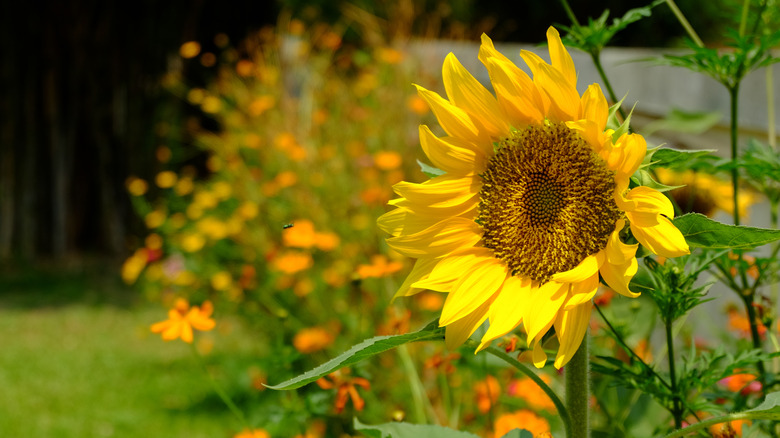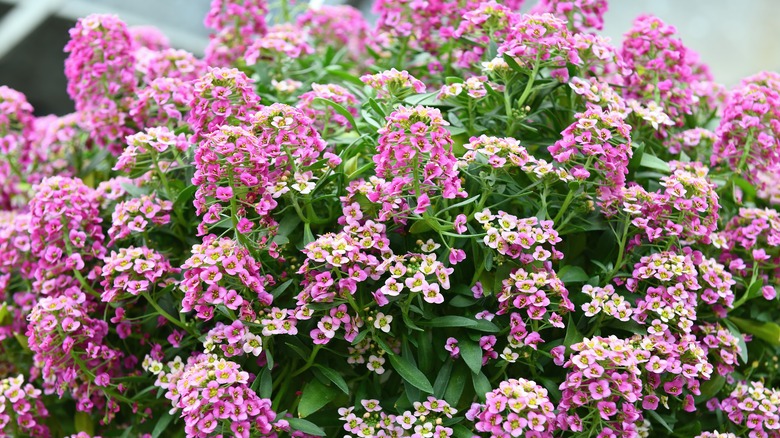13 Flowers You Should Grow From Seed For A Budget-Friendly Garden
Whether you want to grow flowers to cultivate a beautiful yard or to create a wildlife wonderland full of bees and butterflies, the expense of purchasing nursery-grown plants adds up quickly. Luckily, your cravings for more flowers could get a huge discount when you start growing from seed. Once you dedicate yourself to growing a budget-friendly garden, you will soon discover that there are many flowers worth growing from seed, both annual and perennial, and many of these are even accessible to beginners.
However, when growing flowers from seed to save money, your efforts to economize will go to waste unless you plant the seeds properly. For instance, one of the common mistakes to avoid when growing flowers from seeds is assuming that all flower seeds should be sown at the same time, when in fact they have different growth rates and germination needs. Some can be sown in spring, while others require a cold period and are best planted in fall. Likewise, the seeds of some annuals grow best when directly sown into the garden, but some can be grown indoors in a bright window or under grow lights and then transplanted. We've put together a list of budget-friendly options of flowers you can grow from seed, as well as information on the best times and methods to sow them.
Bee balm
Bee balm (Monard spp.) is a perennial loved for its eye-catching flower heads covered with tubular flowers. For budget-conscious gardeners in USDA Hardiness Zones 4 to 9, bee balm is one of the many easy-to-grow perennial flower seeds if you don't have a green thumb. For direct sowing outdoors, you should plant these U.S. native seeds in early spring — or when growing indoors, start seeds two months before your last average frost date.
Blanketflower
With unusual, wheel-shaped flowers in shades of yellow, brown, orange, and red, blanketflower (Gaillardia aristata) is a drought-tolerant, perennial wildflower that's also a U.S. native plant. When grown from seed, blanketflower makes the perfect money-saving addition to meadows, rock gardens, and pollinator gardens in zones 3 to 8. For best results, direct sow blanketflower seeds in the garden in springtime.
Borage
Borage (Borago officinalis) isn't just a pretty, blue flower — it's also a companion plant and pollinator attractor, as well as being edible. A relative of comfrey, this annual bears bunches of star-shaped, blue flowers, and is a great choice for penny pinchers. Not only can it be grown from seed, but it also readily self-seeds and is hardy in zones 2 to 11. Plants thrive when sown directly in the garden 7 to 14 days before the last spring frost.
Calendula
Grown as an annual, calendula or pot marigold (Calendula officinalis) is an edible and medicinal plant that bears showy yellow or orange flowers and is found in zones 2 to 11. Gardeners can start calendula from seed for an economical approach to a garden brimming with color. Start calendula indoors a month or so before the last spring frost, or direct sow calendula seeds two weeks ahead of that date.
California poppy
A U.S. native wildflower that can also be grown in home gardens, California poppies (Eschscholzia californica) have delicate, fluttery blooms that are usually orange but can also be found in shades of yellow, red, and pink. These flowers are hardy in zones 8 through 10. Frugal gardeners grow these drought-tolerant wildflowers from seed, sowing them in the fall or early spring. California poppies have excellent wildlife value, and they can be included to beautiful effect in rock gardens, fairy gardens, and meadows.
Cosmos
With delicate flowers and wispy foliage, cosmos (Cosmos spp.) are self-seeders that will fill your yard with color, making these members of the daisy family a wallet-friendly gardening choice. While the types most gardeners grow are annuals that produce flowers in a spectrum of whites, pinks, and purples, or yellows and oranges, there are perennial cosmos plants such as C. astrosanguineus. These graceful blooms grow best when seeds are sown directly into the garden, after the last spring frost.
Marigold
Marigolds (Tagetes spp.) are commonly grown, annual bedding plants readily found in zones 2 to 11 — but it's not so common for gardeners to start these warm-colored flowers from seed, despite how easy and budget-friendly it is to grow them this way. Gardeners who want to start marigold plants indoors should sow seeds approximately 2 months before the last spring frost. For direct sowing, wait until the risk of frost has passed – and follow our tips to grow flourishing marigold flowers from seeds, such as making sure to choose a spot in full sun.
Milkweed
Known as a larval host for monarch butterflies, milkweed (Asclepias spp.) plants are much more inexpensive to grow from seed than to buy as nursery-grown plants. And since there are many varieties of milkweed butterflies absolutely love, in an array of colors and adapted to a range of zones, gardeners can take their pick from among these perennials. Since milkweed seeds require cold, damp conditions before germinating, gardeners either need to store the seeds in damp sand in the fridge prior to spring sowings or propagate seeds in the fall.
Nasturtium
With brightly colored, funnel-shaped flowers, nasturtium (Tropaeolum majus) is a low-growing, vining plant that has a multitude of uses in the garden. These edible annuals produce flowers in shades of yellow, red, orange, pink, and cream. Although you may find nasturtium plants for purchase at nurseries, growing them from seed is the cheaper way to go, since you can grow a couple of dozen plants from a typical seed pack. When sowing, start seeds indoors in early spring, or sow them directly outdoors two weeks before your last estimated spring frost.
Purple coneflower
There are many varieties of coneflower you can grow from seed for a budget-friendly garden. Purple coneflower (Echinacea purpurea) is a perennial that will provide both beauty and wildlife value to your yard or garden. These perennials have blooms with large, pinkish purple petals around orange centers, and can be grown in zones 3 to 9. Gardeners should sow them indoors in late winter or early spring, or direct sow them into the garden 8 weeks before the last spring frost.
Sunflower
Fast-growing annuals that boast extra-large, cheery yellow blooms and grow up to 15 feet tall, sunflowers (Helianthus annuus) are the perfect choice for penny-pinching gardeners, since you can grow dozens of big-impact flowers for the price of a pack of seeds. In fact, sunflowers are a popular flower you should grow from seed and not buy as a seedling, since they don't like being transplanted. Sow sunflowers indoors in late winter to early spring, or directly into beds or containers after your last spring frost, since these plants are sensitive to cold temperatures.
Sweet alyssum
Grown as an annual, sweet alyssum (Lobularia maritima) has dainty blooms in muted tones of white, purple, or pink. While sweet alyssum plants can be started indoors ahead of time, they are very easy to grow through direct sowing as well, and either way, they should be started several weeks before the last frost. Growing sweet alyssum from seed is a budget-friendly approach to creating an annual ground cover and excellent companion plant – a single seed pack can produce hundreds of plants.
Zinnia
Zinnias (Zinnia elegans) are fast growing annual plants, producing large, colorful blooms that work great as cut flowers. These tall, branching plants with blooms in shades of red, pink, purple, green, white, yellow, red, or orange, are supremely easy to grow from seed. Zinnias grow best when direct sown into the garden 7 to 14 days ahead of the last spring frost – and these plants are inexpensive to propagate in this way, producing hundreds of plants from one seed pack.
